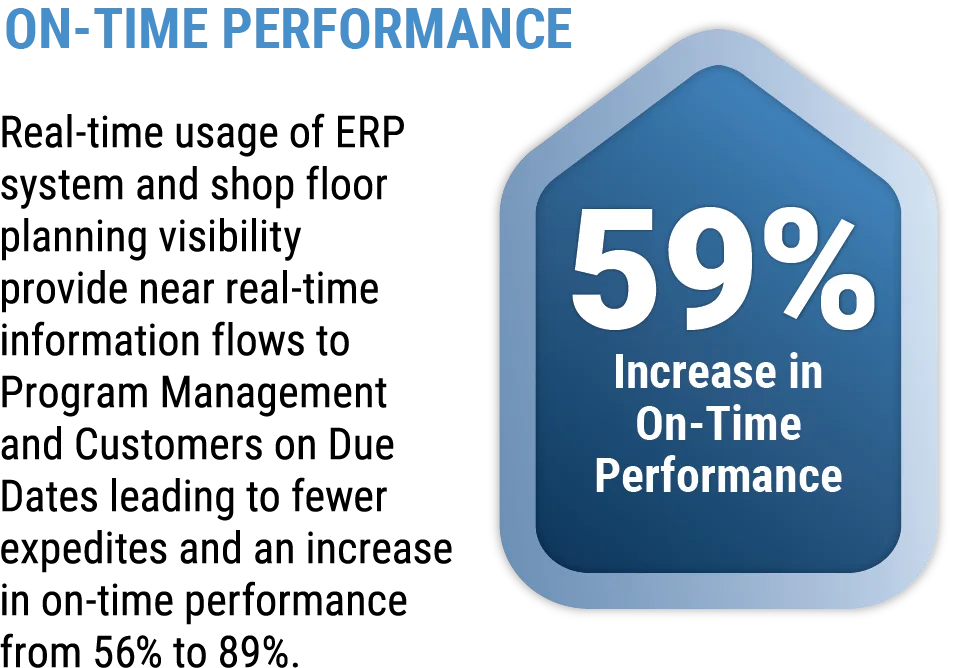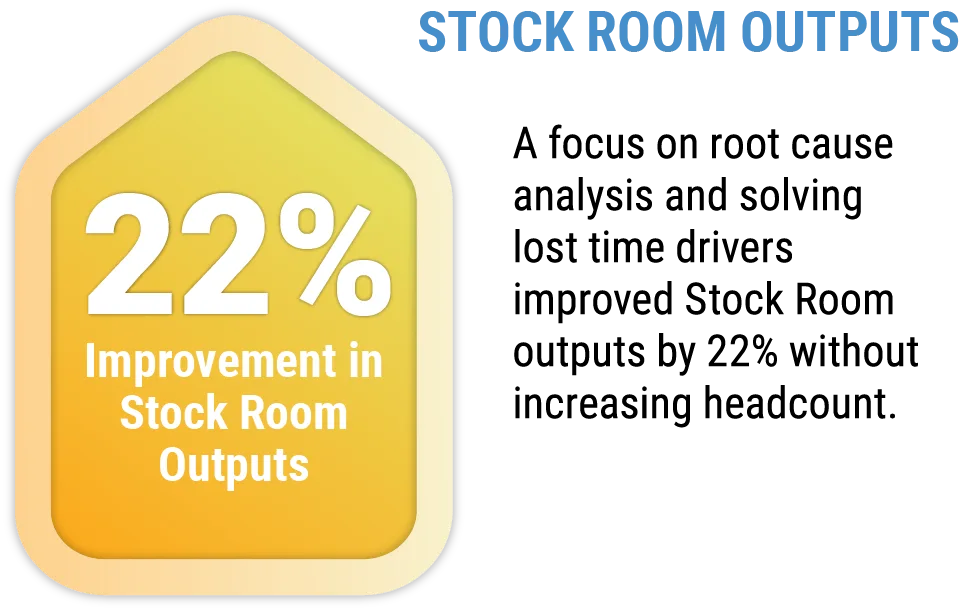
POWERS drives operational and cultural sea change for defense industry manufacturer resulting in staggering performance improvements. On-time performance up 59%. Stock room outputs up 22%. Scheduling accuracy increased 20%. Lost time reduced 69%. Lead time reduced 65%. Indirect time charged reduced 56%.

Project Overview

Performance Results
Faced with a competitive bidding environment, disrupted supply chains, and little predictability within its manufacturing department, our client, a Make-to-Order Manufacturer in the Defense Industry, struggled to get its product out the door on time under budget.
Straining to scale with outdated production paradigms, our client also faced a generational management transition.
Managers who had been there for 20 plus years were set to retire and take their years of experience with them. They had no formal training or knowledge transfer plan in place.
With numerous programs behind schedule and customers to satisfy, program managers were forced to compete for limited resources, with senior management having little visibility on how these decisions impacted the entirety of the operation. This less than transparent view of the operation created a culture lacking accountability.
Product rework time nearly equaled first pass assembly time with no “lessons learned” at the execution level. Instead, the entire operation existed on a “whatever it takes to get it out the door” firefighting culture which hurt morale and contributed to high stress and employee burnout.

Analysis
Inaccurate and Insufficient Production Data
Our on-site team conducted work/time relationship studies and found our client could not reliably plan or forecast resource requirements due to significant database inaccuracies and insufficiencies.
No Unified Production Schedule
Our client lacked a unified production schedule which created constantly shifting “hot lists” and a climate of reactive production and constant firefighting.
Poor Collaboration and Communication
The timelines for individual programs were created within silos without reconciling production resources across the entire enterprise.
Poor Shop Floor Management and Control
Lacking a unified schedule, supervisors were hindered from assigning operators instead, wasting time and effort determining what was needed or could be worked on instead of proactively managing the effective execution of work.
Wasted Time and Resources Across the Organization
Determining manufacturing status across their facilities diverted time and resources from manufacturing, scheduling, operators, and program management.
No Performance Reporting, Evaluation, or Accountability
Without operating reports, there was little understanding of manufacturing department performance. This reporting deficiency was compounded by a culture where past performance was never evaluated at the process or department level.

Solutions
The POWERS team worked with manufacturing engineers to construct observations and time studies to set reasonable expectations with hundreds of unique routing operations.
Working with the planning department, we developed a capacity model for the operation that enabled both short-term department scheduling and long-term resource needs planning and forecasting for the company.
Supporting frontline leadership on the floor, we improved short interval scheduling, follow-up, and barrier identification at the supervisory level. This allowed frontline leaders to identify obstacles better and take action to address any variances more quickly and accurately.
Working with the manufacturing team, we developed lost time capture to the root cause and developed actions to improve output and more closely perform to their expected capacity.
With the help of IT, we developed operating reports to illuminate production department performance for management, identify production variances down to the operation level, and close the feedback loop to program management and scheduling.
Improved communication, feedback loops, and work execution have led to a singular priority focus from one in which everything was “priority one.”











